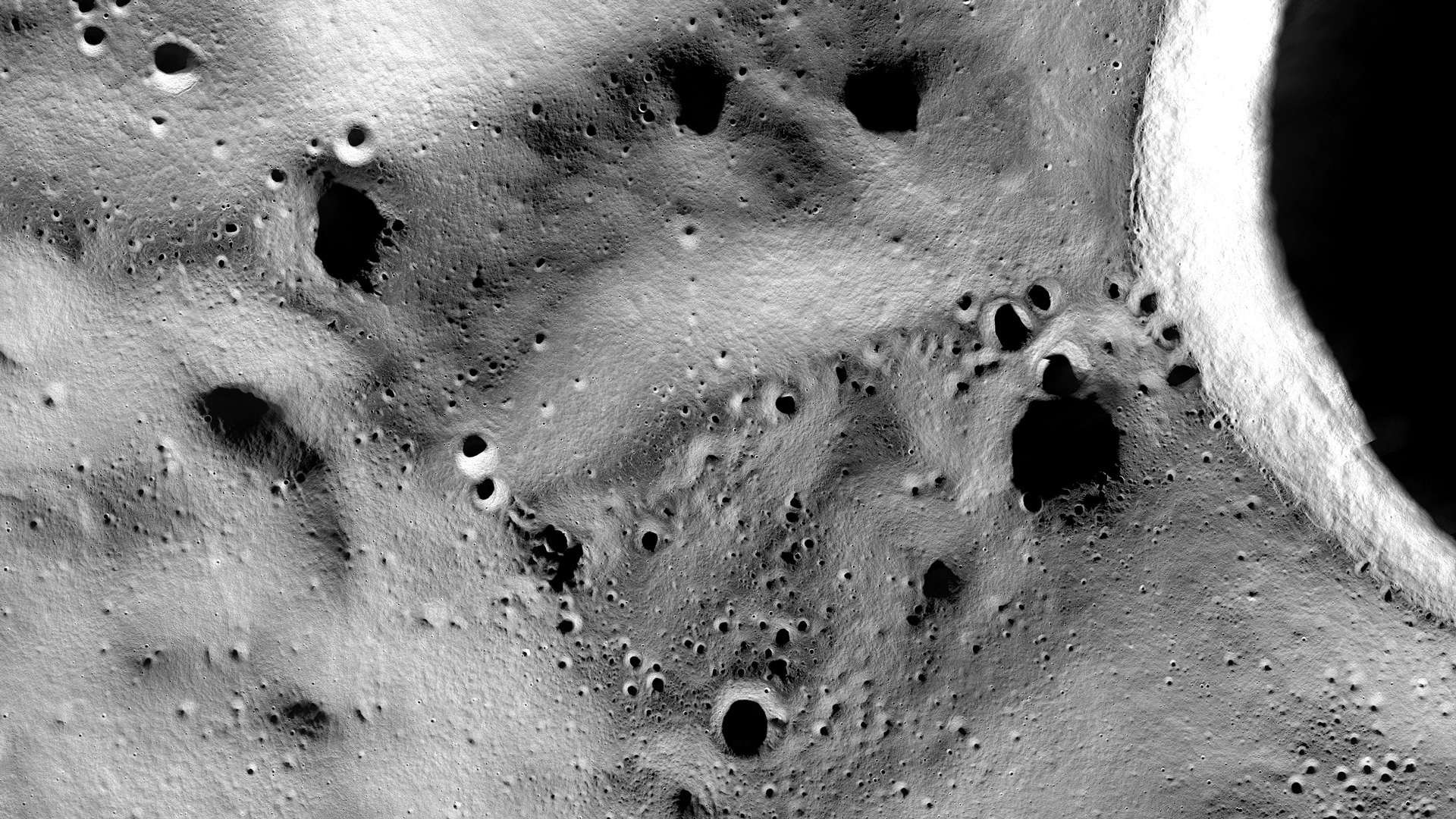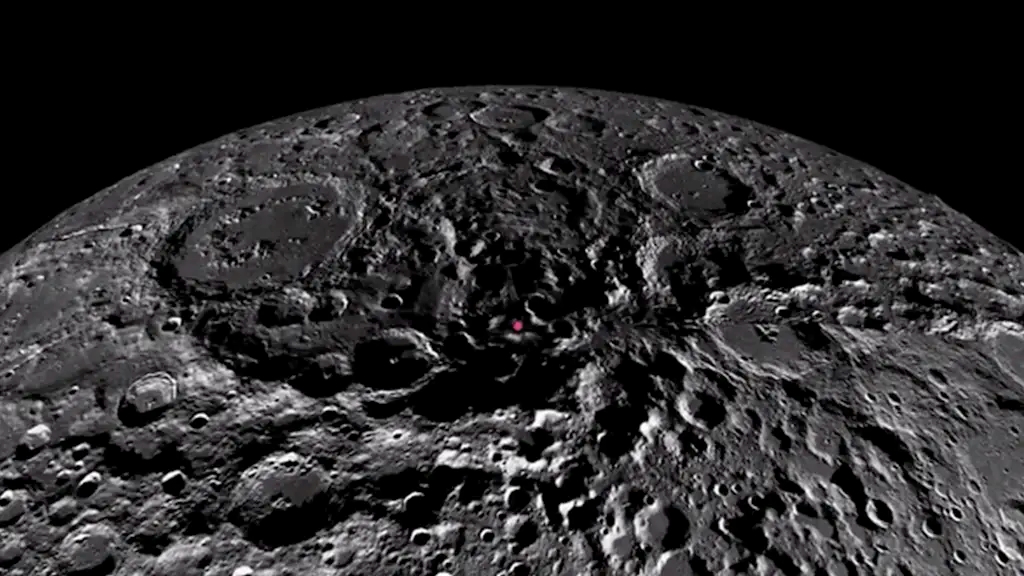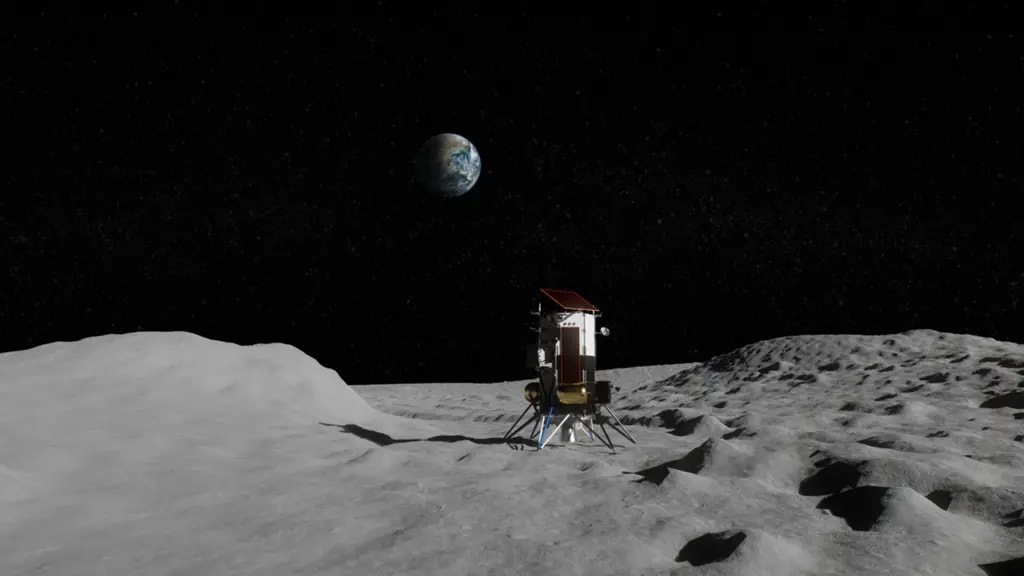LTE on the Moon: The challenges of deploying a cellular network at the lunar south pole

Last month, the world learned the location of the first cellular network on the Moon. NASA revealed that our mission with Intuitive Machines and Lunar Outpost would be landing on a ridge near the Shackleton crater at the lunar south pole. Exploring that part of the Moon is exciting for numerous reasons, one of the most significant being the possibility of discovering ice. Nokia is thrilled that our ultra-compact, low-power, space-hardened, end-to-end LTE solution will be part of that mission. The lunar south pole, however, presents some challenges we’ll need to overcome. But what’s a pioneering expedition without obstacles?
Let’s start first, not with the Moon, but with the Sun, the relative position of which will be critical to this mission. The Moon rotates much more slowly than the Earth, so a lunar day is generally the equivalent of 29 days on Earth. That means equatorial areas of the Moon consistently see the Sun for around 14 consecutive days, which are then followed by 14 days of night. At the lunar south pole, however, the lighting conditions vary depending on the time of the year, so we are timing the mission to maximize our exposure to the Sun. Our landing site will be fully sunlit for the entire duration of our mission. That’s good news because we need the Sun to feed the solar panels that power our network.
While the Sun will be overhead, it will not be directly overhead. As Shackleton is at the lunar south pole, the Sun is always just above the horizon, which will have a big impact on the operation of our mission. The Lunar Outpost rover will need to face its solar panel towards the Sun to charge its batteries, which will ultimately power the onboard LTE equipment. We will also need to adapt the thermal design of our hardware to keep our equipment within its operational temperature limits in this environment.

The terrain around Shackleton crater presents some interesting physical challenges. While we will avoid driving into treacherous areas, such as craters or permanently shaded regions, the low angle of the Sun over the horizon means that even small boulders or changes in elevation can produce very long shadows. Furthermore, the LTE radio propagation is highly dependent on the terrain properties. The height of the antennas and shadowing are critical factors in determining whether we can maintain a high-throughput connection between the base station and the rover. To account for those factors, we have done extensive simulations using digital terrain maps of the Moon and developed a propagation model to evaluate the LTE radio “quality” at our landing site. We are using that data to plan our rover’s routes carefully. We need to stay in the sunlight, not merely to avoid driving into a crater but also to minimize the risk of losing connectivity.
Varying temperatures are also major factors that impact our equipment designs. While we won’t be dealing with the bitter cold of the lunar night, we still need to cope with the temperature differential between direct sunlight and shade. Because the Moon has no atmosphere, there is nothing to trap ambient heat. All heat dissipation occurs via conduction and radiation. That means there is a large difference in temperature between objects directly in sunlight and objects in shade. Our thermal management solutions are being designed accordingly.
For instance, our LTE antennas on the Intuitive Machines’ lander will be exposed to relatively balmy temperatures of around 20⁰C on the side facing the Sun, but a few inches away, the opposite shaded side of the antennas will be enduring freezing temps below -100⁰C. Our equipment is hardened to withstand not only such extreme temperatures, but also rapid thermal changes or shocks, and efficient heat dissipation of our active components – all while keeping size, weight and power consumption to a minimum.

Of course, these are only the hurdles presented by the landing site. We still have to tackle many other challenges inherent in any lunar mission: the impact caused by cosmic radiation on sensitive electronic components, the nuisance of lunar dust and the effects of extreme G-forces (especially those experienced during the rocket launch phase), just to name a few. These are all complex problems, but they are fascinating problems that we are working to solve to ensure a successful mission.
Images from top to bottom: 1) A data visualization of the lunar south pole from NASA, 2) The location of Shackleton Crater from Lunar QuickMap, a collaboration between NASA, Arizona State University and Applied Coherent Technology Corp., 3) The Nova-C Lander courtesy of Intuitive Machines
